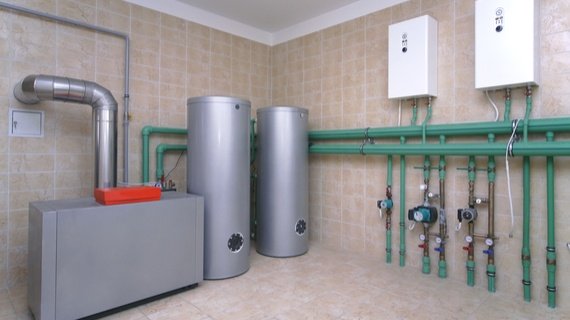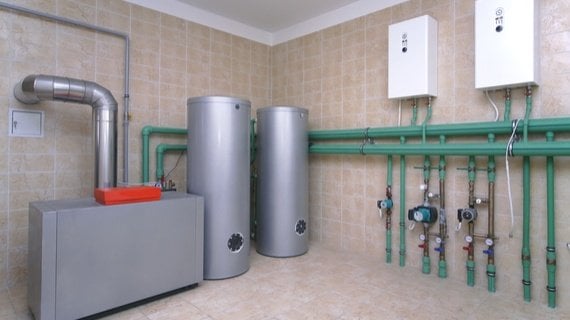
The merest mention of the phrase 'thermal disinfection' readily conjures up visions of Marvel-esque superheroes. Or more pertinently, a brief snapshot of their special powers. Think Ghost Rider, Sunfire, Phoenix and Human Torch. Not least because of the inference of heat to combat something sinister lurking in the shadows.
To be honest, while the thermal disinfection we're talking about in this blog isn't in the realms of the vivid imagination of a comic book writer, it is nevertheless a process by which potential threats to humankind's wellbeing can be kept at arm's length. Just ever so slightly more down to earth in nature.
So, The Next Question is This. What Precisely is Thermal Disinfection?
Well, as you might have expected, it has a lot to do with killing of legionella bacteria. With the recognised thermal disinfection process keenly associated with the cleaning of calorifiers and hot water vessels. That being said, and more often than not, thermal disinfection is the lone wolf of water treatment. It is also considered a last case scenario, when situations are present that make chlorination of vessels unfeasible. Primarily being actioned with direct regards to hot water systems/assets.
Relying heavily on the presence of moist heat as its first line of defence against water-borne pathogens, thermal disinfection goes about its business courtesy of exposing bacteria to specific temperatures for a consistently measured passage of time. This high temperature approach fundamentally targets and destroys the protein which lies dormant in water-borne viruses, effectively rendering them either inert or better than that; dead.
Given that a range of bacteria such as Norwalk virus, MRSA and of course, legionella affects literally hundreds of thousands of the global population year on year, it's imperative that the water sources we interact with via outlets (showers, drinking water, etc) are treated with a host of far-reaching measures which counter this latent threat.
Am I Correct in Thinking That Thermal Disinfection isn't Exactly a New Treatment Aimed at Water Hygiene?
Taking this paragraph as an abstract, we discuss the background to thermal disinfection. An established process which has been adopted and rigorously applied across various industries, not just the field of water treatment. In fact, the essential practices of thermal disinfection are probably amongst the oldest of water treatment methods advocated in numerous industrial, manufacturing and commercial sectors, and in a similar vein to other disinfection processes, it targets the inactivation of pathogenic (micro)organisms present in water.
Which are predominantly unseen.
What's the Science/Thinking Behind Thermal Disinfection?
As we are already aware, legionella is killed off in water temperatures above 60°C, and is super quick time too in the event that this bacterium exists at the time. Sub-5 minutes, typically. Also referred to historically as 'pasteurisation', thermal disinfection cleanses water outlets by means of heat transfer, as we've already hinted at. Aimed strategically at fittings and areas that ordinarily might not be as readily accessible to chemical disinfectants. Although professionally-speaking, the effectiveness of chemicals pale in comparison to the introduction of penetrative heat which actively infuses with biofilms to obliterate them.
Of course, there is often a caveat, and thermal disinfection is no different. Not least because realistically such preventative treatments only offer a short-term solution when it comes to maintaining water sanitation. Annoyingly the recolonization of the water system can occur as quickly as a few weeks down the line, depending on what additional water management measures have been implemented simultaneously. Realistically, the overall effect of the disinfection varies from site to site and could only last between 2 - 4 weeks.
Does Thermal Disinfection Require Specialists To Tackle the Job in Hand?
Ideally, yes. Normally professional water treatment experts and licensed plumbers are recruited to perform thermal treatment. One of the predominant reasons being that there's often a requirement for by-passing of thermostatic mixing valves (or TMVs) - and possibly tempering valves - during the job.
At the same time it's a good idea to consult with both individuals responsible for workplace health and safety and water risk management teams, in advance of carrying out a thermal treatment in the majority of settings.
When and Whereabouts in a Water Storage System Do Thermal Disinfection Processes Usually Occur?
Thermal disinfection treatments can only ever be instigated on hot - or warm - water systems and can never be undertaken on cold water systems.
In terms of the 'when', this traditionally is triggered if and (that word again) when traces of legionella bacteria are detected in a water storage assemblage. Tending to be administered in the vicinity of the acknowledged source. For example, taps and shower facilities in certain more familiar infrastructures. Ultimately the work which needs to be actioned then and there may well impact an entire facility, or merely a limited number of outlets which have been pre-determined as flash points as such. This depends largely on the layout of the hot/warm water system under scrutiny.
It's not uncommon for more sizeable facilities to house elaborate internal plumbing infrastructures, in which instance water risk management teams may give the green light to more widespread thermal disinfection processes to be staged on a scheduled basis. If this is rolled out then the likelihood is that normal service to said building - and its occupiers - will experience disruption for several days while the water system is 'made good'.

Are There Any Concerns Regarding This Robust process?
Although not issues which should unduly concern, there are a number of issues it's worthwhile being mindful of when preparing to carry out thermal disinfection.
We've documented the core areas beneath:
• Corrosion and degradation of a water storage assemblage as a result of conducted thermal disinfection CAN present over an undefined passage of time. However this is only in the event of temperatures routinely exceeding the specifications of the construction materials. Otherwise any structural legacy should be minimal
• Scalding IS a notable risk factor when practising a rudimentary thermal disinfection, for the simple reason that to action fully the water temperatures need to exceed 60⁰C. Ergo any vulnerable individuals must be made aware of the risk and it (the risk) should be managed accordingly
• By a similar token, hot/warm water should NEVER be accessible by those susceptible individuals who reside (or use) certain facilities which are set to undergo thermal disinfection
• Designated rooms found within properties might need to be isolated before thermal disinfection can be started, thus removing those at risk from an affected water supply. Be it as a measure to control both the latent threat of scalding innocent parties or indeed, exposing them to legionellosis as part of the remedial processes
• Adequate and suitable PPE should ALWAYS be worn by anyone tasked with undertaking thermal disinfection, which offers impenetrable protection from the damaging effects of hot water and microbial threats
• Extreme water temperatures could prove a problem to elastomeric seals, causing damage which might lead to pump failure. Unless a WaterMark-approved product is in-situ to counter the effects of increased temperatures. Ergo, these products SHOULD be isolated before treatment processes commence.
And then there's the biggie...
The one about an emerging body of evidence that infers that repeated thermal disinfections at temperatures less than 70⁰C may result in more thermally resistant legionella species. Somewhat like when clinical experts suggest that if we take too many courses of antibiotics then our bodies can naturally negate the effects over a period of time.
Whatever you choose to do about thermal disinfection, be sure to get in touch with BrodexTrident to discuss your specific needs today.






